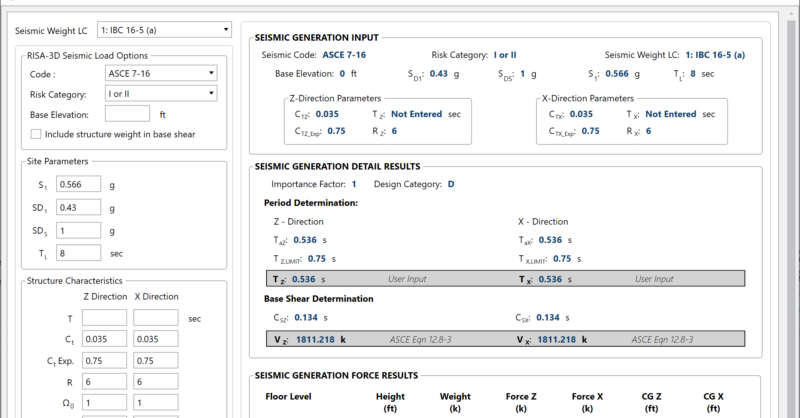Products
Learn
Support
Company
Seismic Forces are generated automatically using seismic parameters R, SD1, and SDS in the Seismic Load Generator when using the Director to go from RISAFloor to RISA-3D or when inserting Seismic Loads on a rigid diaphragm in RISA-3D. Additionally, Seismic Load Combinations can be generated using the seismic parameters ρ, Ωo, and SDS and applied to the structure. These seismic parameters are used to approximate the inelastic response of the structure subjected to seismic design lateral forces. Figure 1 shows a simplified example of what some of the seismic parameters represent when looking at force versus drift for a lateral system.
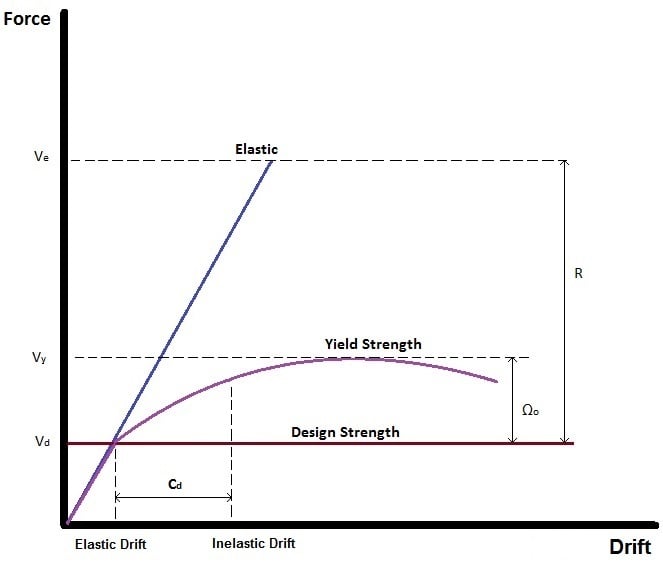
In RISA-3D, the seismic load generator is accessed by selecting the Advanced tab and then clicking on Seismic. When the load generator opens and the loads are calculated the dialogue looks like the image below.
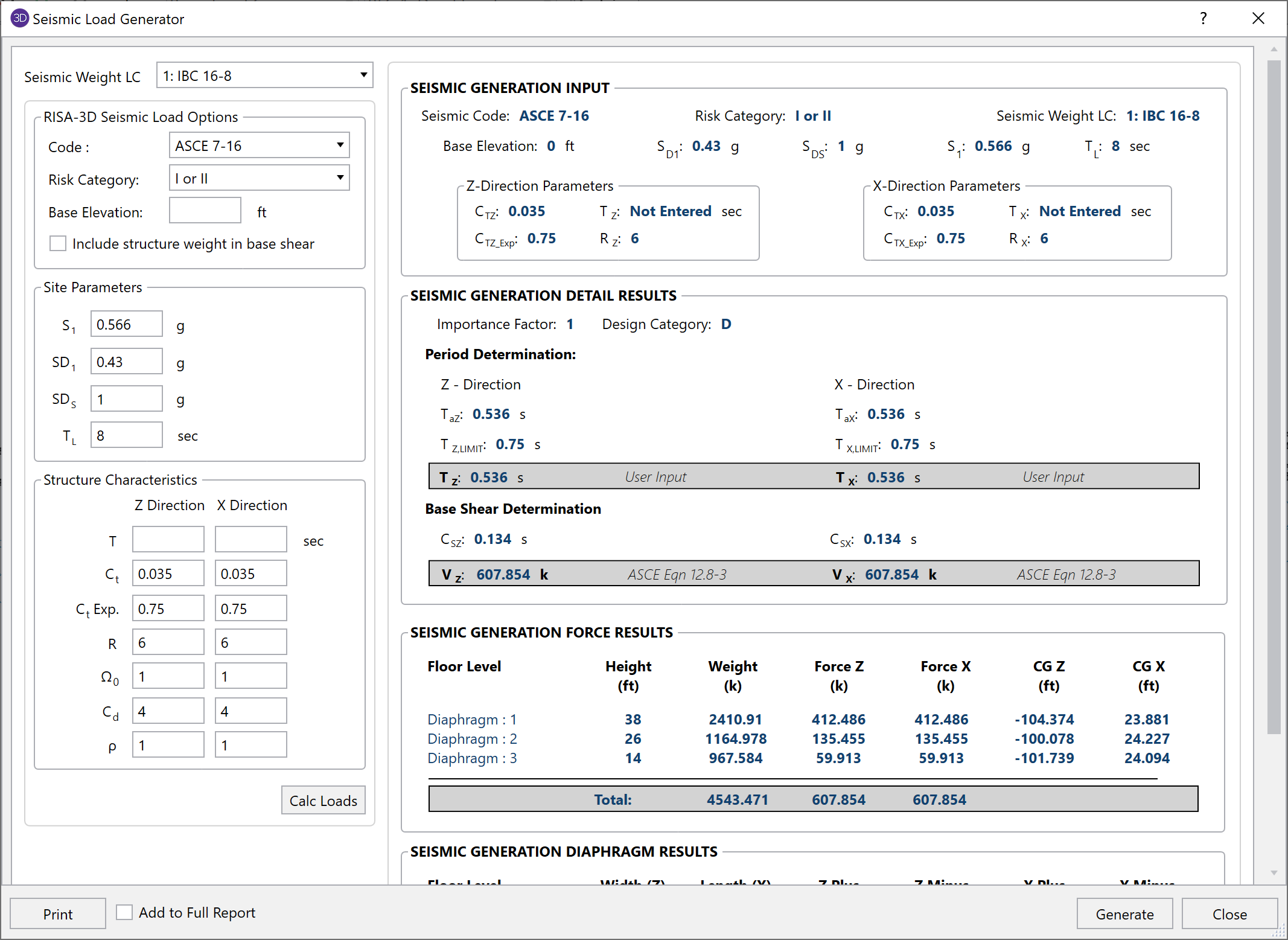
R is the Response Modification Factor as defined in Table 12.2-1 of ASCE 7-16. It provides a reduction for the design seismic force based on the ductility of the system. The program offers a single user-input R value in each Global direction.
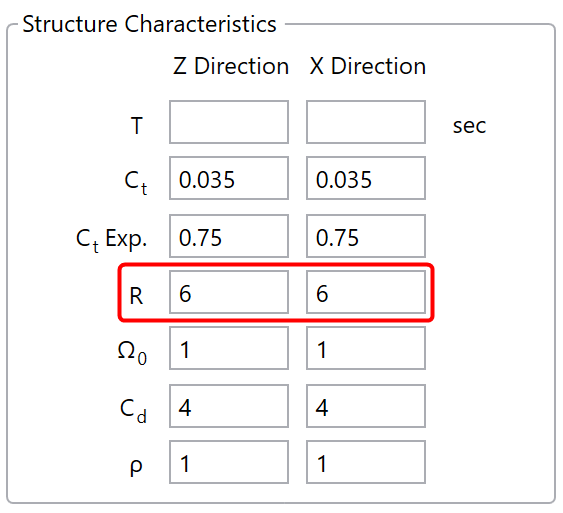
R is used in the calculation of the Seismic Response Coefficient, Cs, which determines the Seismic Base Shear, V, and these values get reported in the Seismic Generation Detail Results.
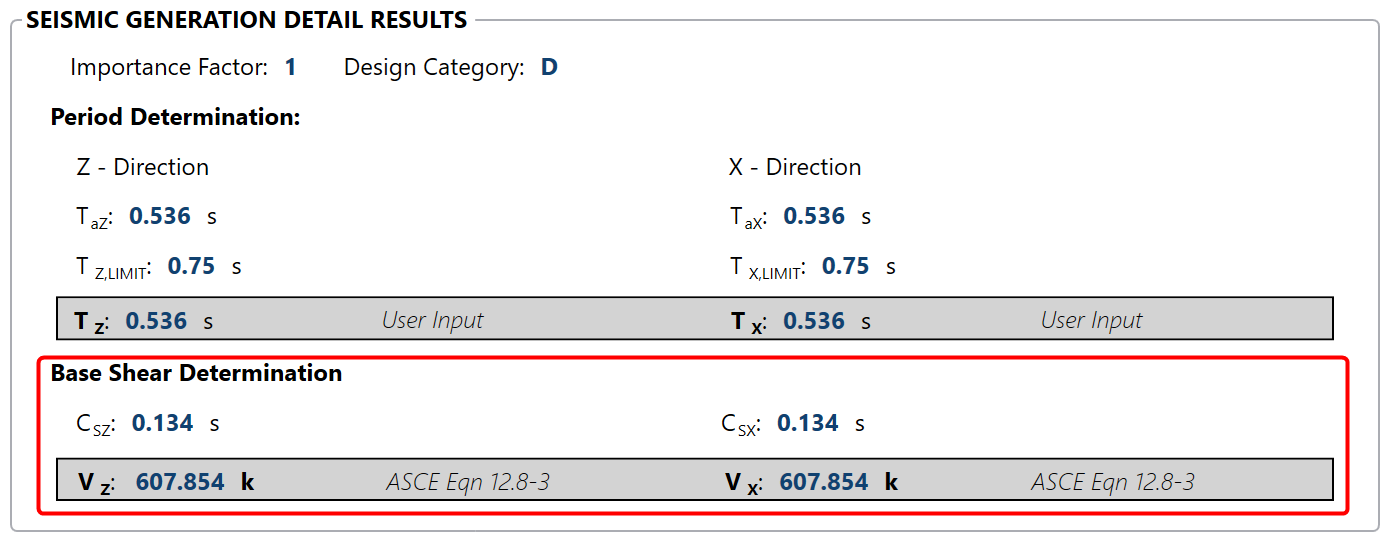
Deflection amplification factor, Cd, is a factor to approximate the inelastic drift due to seismic forces. When the ASCE and IBC codes are used, the Story Drift for the strength level combinations will account for the inelastic deflection (i.e. the Cd factor) by amplifying the node deflections at each level by Cd/ I per Section 12.8.6 of ASCE-7.
Omega, Ωo, is an overstrength factor as defined in Table 12.2-1 of ASCE 7-16. This factor accounts for the inherent strength in the design equations, the material used, and the lateral system specified.
Rho, ρ, is the redundancy factor as specified in Section 12.3.4 of ASCE 7-16. The redundancy factor is used to provide for redundancy in each horizontal direction within the system.
In RISA-3D, Ωo, Cd and ρ are user specified values that are defined in the Seismic section of the Model Settings.
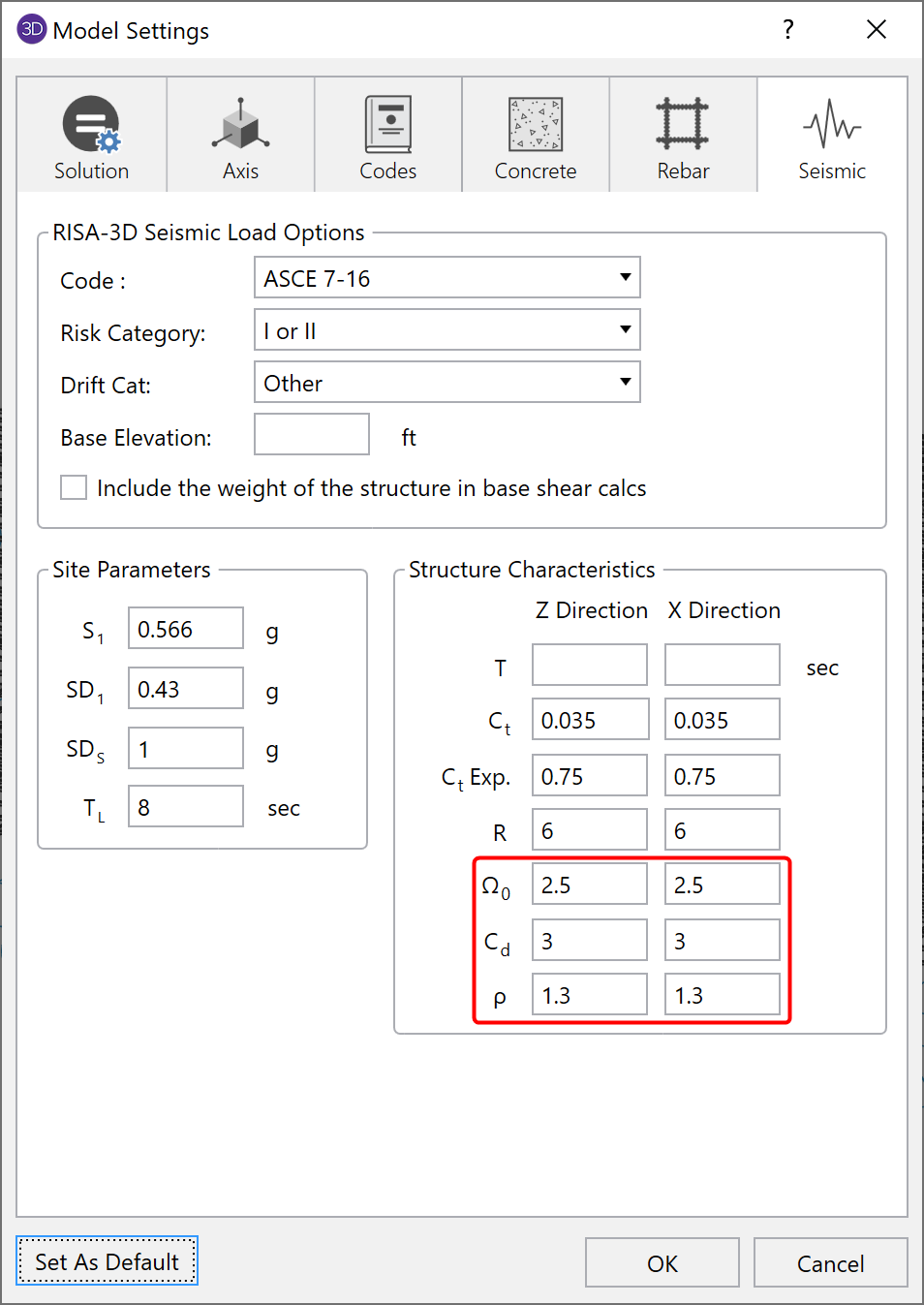
In seismic design some members may be required to be designed to an overstrength load. In addition, the lateral system subjected to seismic forces may be required to have some redundancy. In RISA-3D, this is done by creating load combinations with the Omega (overstrength) and Rho (redundancy) factors applied to the earthquake loads. This can be done using the Seismic Load Combination Generator.
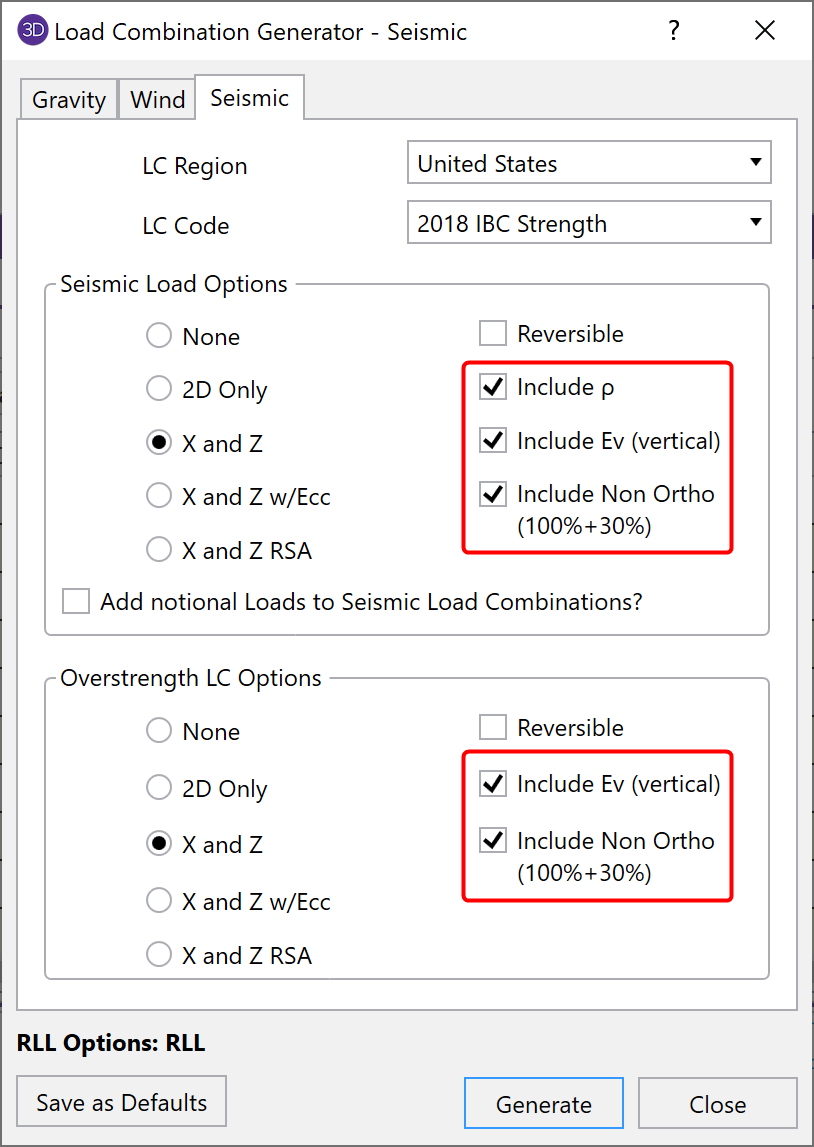
SDS represents the 5% damped spectral response Design acceleration for short period response as specified in ASCE 7 Section 11.4.5. SDS can only be used if Dead Load is selected. It is used for the vertical portion of seismic load and is typically multiplied by 0.2*DL in ASCE 7 Section 12.4 load combinations.
The Seismic Load Combinations with these parameters are shown below as an example.
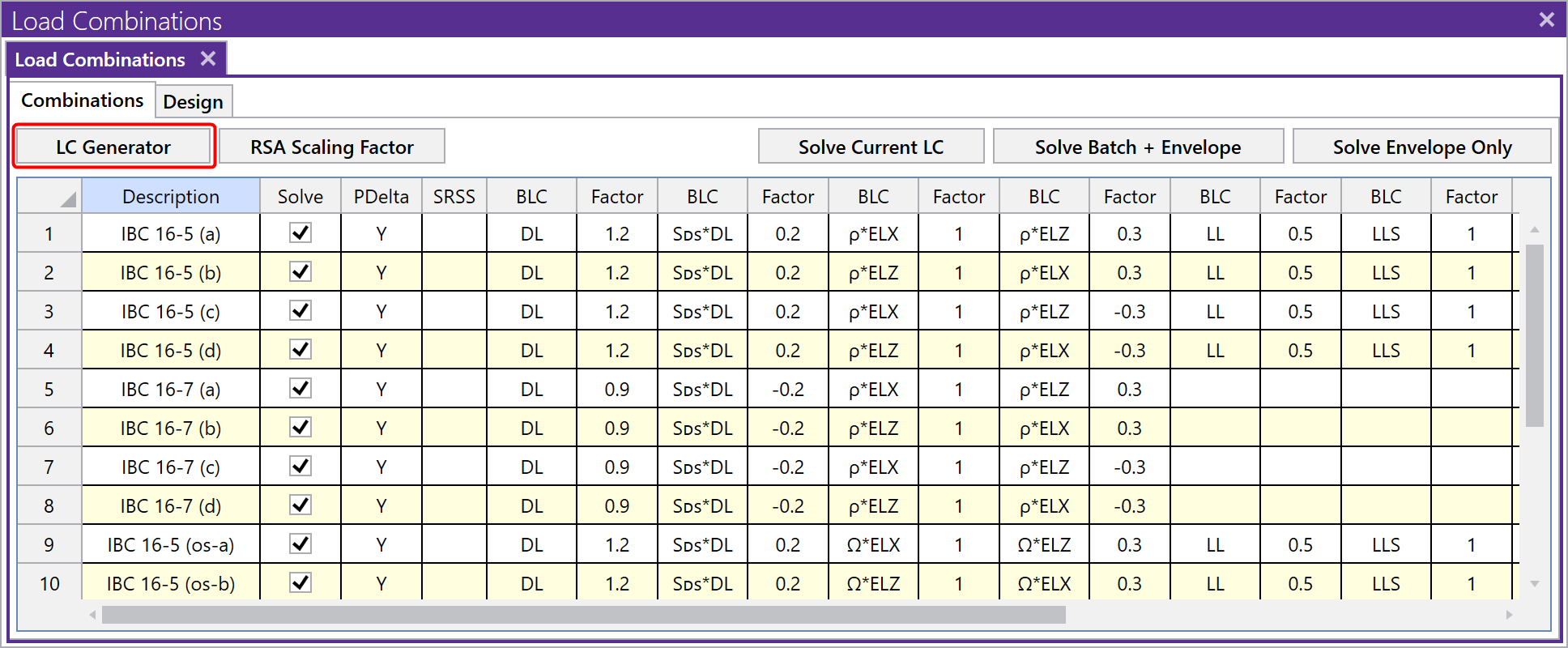
To learn more about generating seismic loads in RISA-3D, visit the RISA-3D Online Help.
